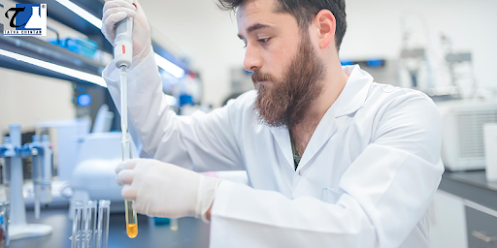Uses of Tetrabutylammonium Bromide
Nowadays, pharma manufacturing companies are using different methods to increase both yield and rate over the uncatalyzed reaction. To achieve this, tetrabutylammonium bromide (TBAB) is used as a phase transfer catalyst (PTC). The use of PTC is a special and promising method for synthesizing organic compounds.
Uses of Tetrabutylammonium Bromide
In a heterogeneous system, a PTC enables a reaction between compounds soluble in water and compounds soluble in organic solvents. PTC is specifically used in heterogeneous systems because it makes reactant migration between phases easier. Without the use of high polar solvents such as Dimethyl Sulfoxide (DMSO) or Dimethylformamide (DMF), the reaction can be carried out in a biphasic system with water and an inexpensive nonpolar aprotic solvent.
DMSO is a valuable cryoprotective agent that is also one of the most commonly used pharmaceutical drugs. Sometimes it is used to help reduce pain and inflammation. DMF is an organic solvent that is used in pharmaceutical manufacturing, chemical manufacturing, and acrylic fiber spinning. DMF, on the other hand, is present in adhesives, printing formulations, textile dyes, and pigments.
TBAB as a PTC is soluble in DMSO and DMF and it takes anions of inorganic salts to organic solvents and transports them back to the water phase. The progress of the reaction is usually under mild conditions with straightforward work-up techniques.
Together with quaternary ammonium salts such as TBAB, other PTCs are phosphonium compounds and crown ethers. PTC is specially applied in the heterogeneous system because it facilitates the migration of the reactant from one phase to another.
There are other uses for TBAB other than as a PTC. According to research, this white powder eliminates peak tailing and reduces retention time. It does this during the chromatographic analysis of quaternary ammonium compounds by acting as an ion pair reagent. TBAB also acts like an iconic liquid when in a molten state. As a result, it offers a potentially greener substitute for organic solvents in organic synthesis.
In organic synthesis, TBAB is frequently employed as a catalyst to move reactions from the organic phase to the aqueous phase and vice versa. It catalyzes the reaction between the water phase and the organic phase.
The role TBAB plays in organic synthesis is irreplaceable. It is also effective in the preparation of R2C-type compounds. These compounds could be used in the manufacturing of corresponding diazomethane, hydroxyl carboxylic acid, dichlorocyclopropane, halothane, isonitrile, and nitrile.
Furthermore, TBAB can help produce a higher yield in alkylation reactions and also help avoid the harsh conditions in alkylation, such as anhydrous operation. It can also be used for elimination reactions, carbene ring addition reactions, polymerization reactions, addition reactions, condensation reactions, cyano-halogen ion replacement reactions, ester hydrolysis, and REDOX reactions.
The ion pair reagent TBAB, on the other hand, is used to synthesize antibiotics like bamicillin and sutamycin. Deep eutectic solvents were created by combining polyethylene glycol and tetrabutylammonium bromide.
Furthermore, TBAB is used in the preparation of other salts in the tetrabutylammonium cation through salt metathesis reactions. Another name for this reaction is a double displacement reaction. It is a chemical reaction in which two interacting chemical species exchange bonds. As a result, products with identical or similar bonding affiliations are created.
Additionally, TBAB has the property of altering the degree of solvenization of ions. This could increase the reaction rate and speed up the activity of the ion reaction. There used to be an issue that two reactions in different phases were difficult to react to. However, the issue could be eliminated with the presence of PTC in the process.
TBAB was chosen to improve the bioavailability of poorly water-soluble lifesaving drugs and minimize drug-to-drug interactions. In this process, TBAB acts as the cationic surfactant.
More recently, TBAB has been utilized as a cost-effective and low-toxic IL in some constructive synthetic transformations. The attention it has gained as an efficient homogenous PTC is because it is low-cost, non-corrosive, non-inflammable, non-volatile, and environmentally friendly. It is also a commercially available ammonium salt with chemical and thermal stability.
Other uses of Tetrabutylammonium Bromide
1.Dehydrochlorination of vinyl chloride
2.Facilitate the introduction of thiols to conjugated alkenes
3.Synthesis of polyamides through the polymerization of diisocyanates and terephthalic acid.
4.In the absence of organic solvent and catalyst, it is used in the synthesis of alkyl-substituted pyrroles.
5.used together with phosphorus pentoxide to achieve greener deoxy-bromination.
Additionally, TBAB is used for the following:
TBAB is an iconic liquid in the regioselective O-alkylation reactions.
1.Other processes in which it is involved include the N-alkylation of aromatic carboxamides and the 2.Curtius rearrangement.
Conclusion
Many pharma manufacturing companies now use tetrabutylammonium bromide as a phase transfer catalyst to increase both yield and rate over the uncatalyzed reaction. The recent popularity of TBAB in the industry is due to its being environmentally friendly, non-inflammable, inexpensive, and non-volatile. It is for these and many more reasons that this quaternary ammonium salt is commonly used in manufacturing processes these days.






Comments
Post a Comment